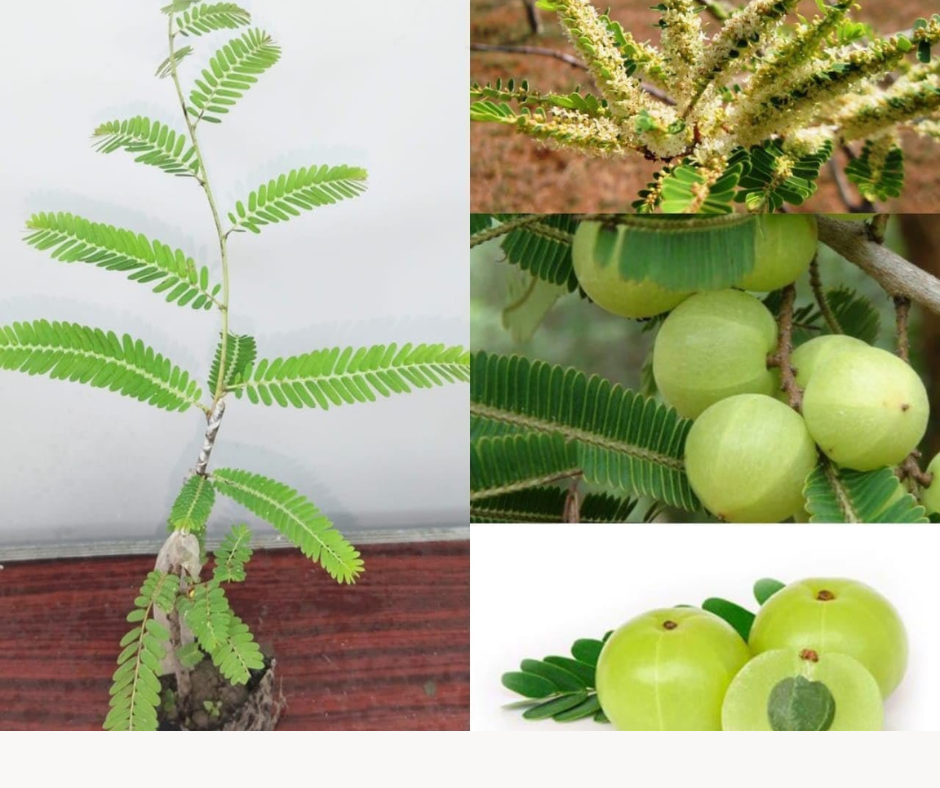Amla, revered as the Indian Gooseberry or Nelli (Embelica officinalis), holds a cherished status in Indian agriculture, valued for its remarkable medicinal properties, abundant vitamin C content, and incredible adaptability. In this discourse, we delve into the realm of sustainable Amla cultivation, accentuating the adoption of organic methodologies to enhance both yield and quality.
Climatic Prerequisites for Amla Plantation
- Amla flourishes in tropical climates, thriving under the warm embrace of the sun.
- Optimal annual rainfall falls within the range of 630 mm to 800 mm.
- Young saplings (up to 3 years old) necessitate shielding from scorching hot winds (especially prevalent in May-June) and frost during the winter months.
- Mature Amla plants exhibit resilience against freezing temperatures and can withstand even the scorching heat, enduring temperatures soaring up to 46°C.
Soil Characteristics
- Amla manifests a preference for light to medium-heavy soils, excluding purely sandy soil.
- The adaptable nature of the Amla tree extends to its ability to thrive in dry regions and even moderately alkaline soils.
Diversity in Amla Varieties
- Highly recommended varieties include:
o Banarasi
o Chakaiya
o Francis
o NA-4 (Krishna)
o NA-5 (Kanchan)
o NA-6
o NA-7
o NA-10
o BSR-1 (Bhavanisagar)
Planting Essentials and Inputs
- Before initiating the planting process, it is imperative to enrich the soil with 15 kg of meticulously decomposed farmyard manure (FYM) per pit, along with 0.5 kg of phosphorus.
- Throughout the initial decade, it is advisable to administer 30 grams of nitrogen per tree annually from September to October.
Propagation Methods
- Amla propagation can be achieved through either seeds or vegetative techniques.
- Seed propagation entails:
o Placing seeds in a sun-kissed location, ensuring exposure to at least 6 hours of sunlight daily.
o Maintaining soil moisture without inducing waterlogging.
o Shielding seedlings from extreme temperature fluctuations and fierce winds.
Regular fertilization with a balanced organic fertilizer monthly. - Vegetative propagation methods encompass the utilization of hardwood cuttings or air layering.
Land Preparation and Plantation Procedures

- Thorough land preparation through meticulous fine tillage is essential.
- Incorporating organic fertilizers such as FYM is imperative.
- Nursery beds should ideally be 2.5 cm deep and 15 cm x 15 cm in dimension.
Training Regimens and Pruning Practices
- Young Amla plants benefit greatly from training to adhere to a central leader system.
- Pruning serves to maintain the desired shape and eliminate diseased branches.
The Boons of Mulching
- Adopting mulching practices around Amla plants facilitates:
- Conservation of soil moisture.
- Effective suppression of weed proliferation.
- Regulation of soil temperature fluctuations.
Pest and Disease Mitigation Strategies
- Common pests plaguing Amla cultivation include aphids, fruit flies, and leaf-eating caterpillars.
- Control measures entail the utilization of neem oil, deployment of biological agents, and adherence to proper sanitation protocols.
Harvesting Protocols and Yield Expectations
- Amla fruits typically attain maturity from November to December.
- Harvesting should be conducted upon attaining full ripeness.
- Yield outcomes are contingent upon the variety cultivated and the efficacy of management practices. On average, a mature Amla tree can yield approximately 50 to 80 kg of fruits annually.
Exploring Marketing Avenues and Value-Added Offerings
- Amla enjoys demand across diverse industries, finding utility in:
- Healthcare products (including hair oil, dye, shampoo, face creams, and tooth powder).
- Pickles.
- Traditional formulations.
The cultivation of Amla in a sustainable manner amalgamates age-old wisdom with contemporary organic methodologies. By embracing these practices, farmers can not only secure a plentiful harvest of this exceptional fruit but also contribute to environmental preservation and the promotion of holistic well-being.
Remember, Amla transcends mere crop status; it embodies a reservoir of wellness awaiting nurturing! 🌿🍀

